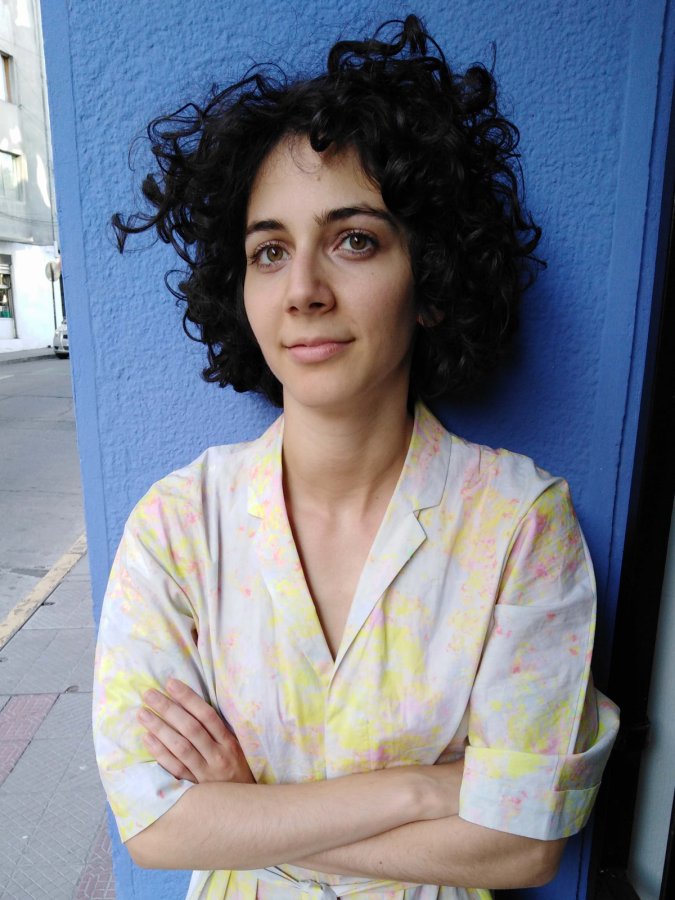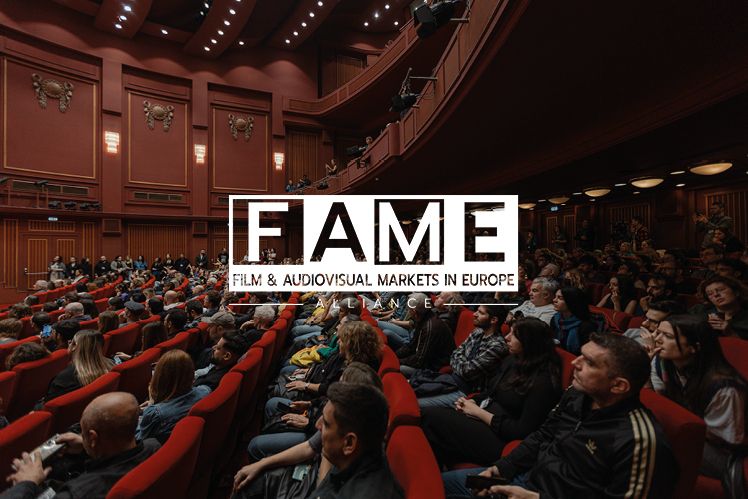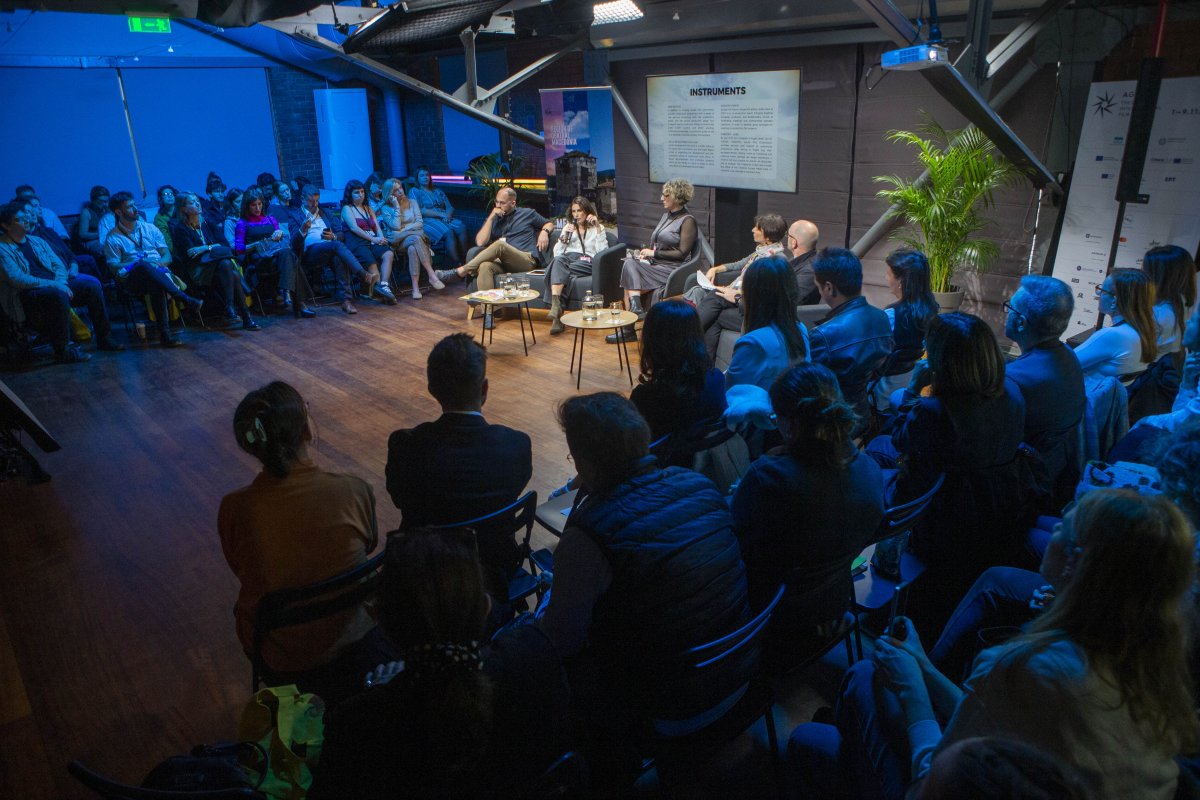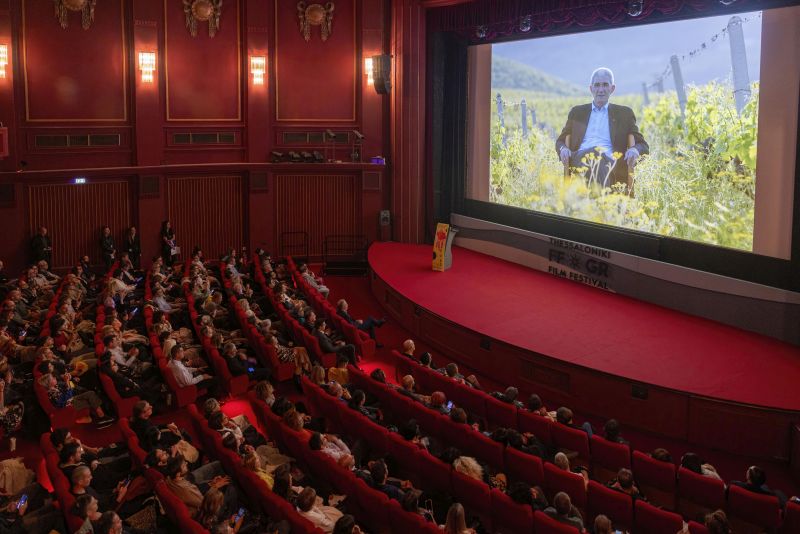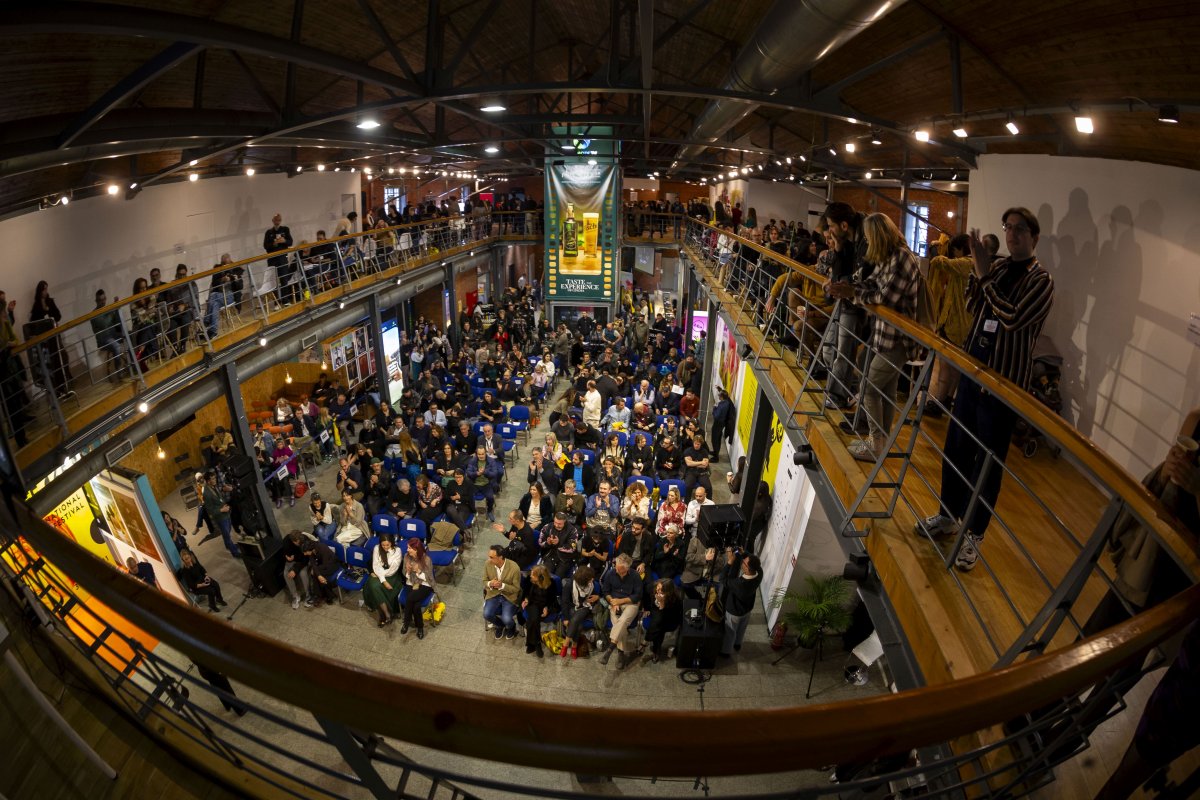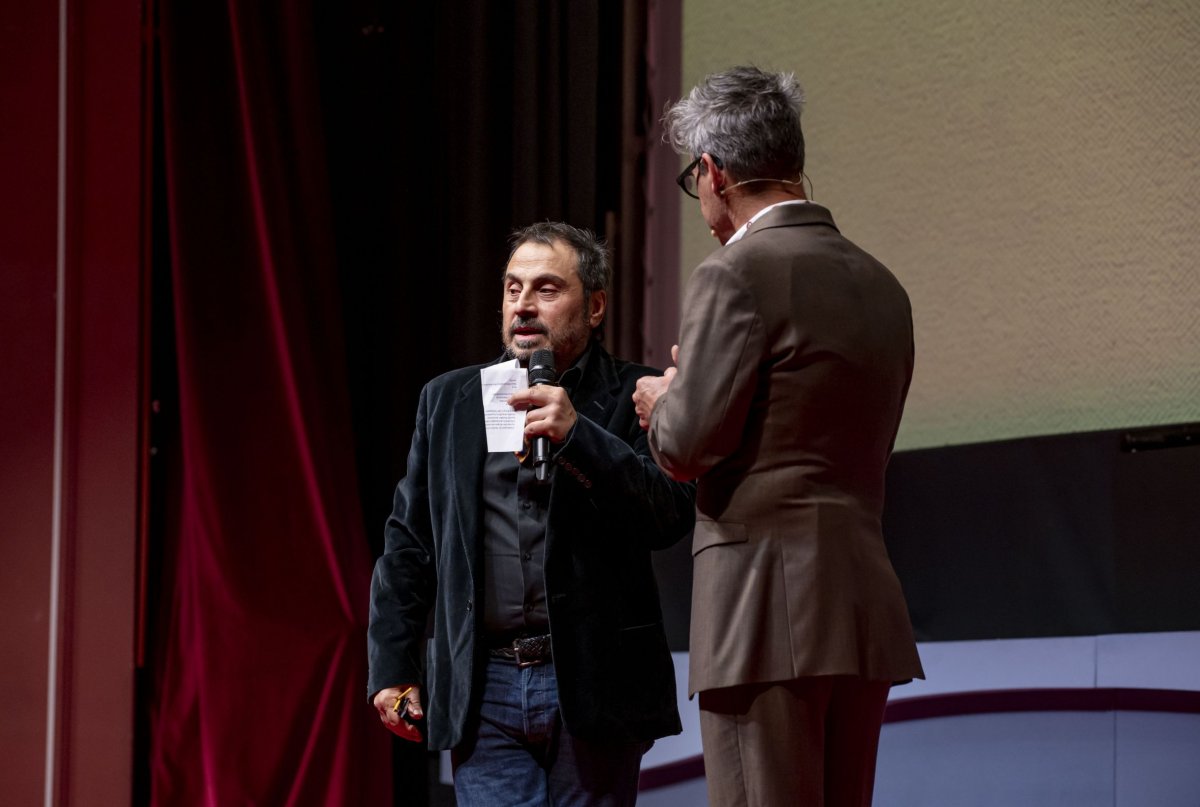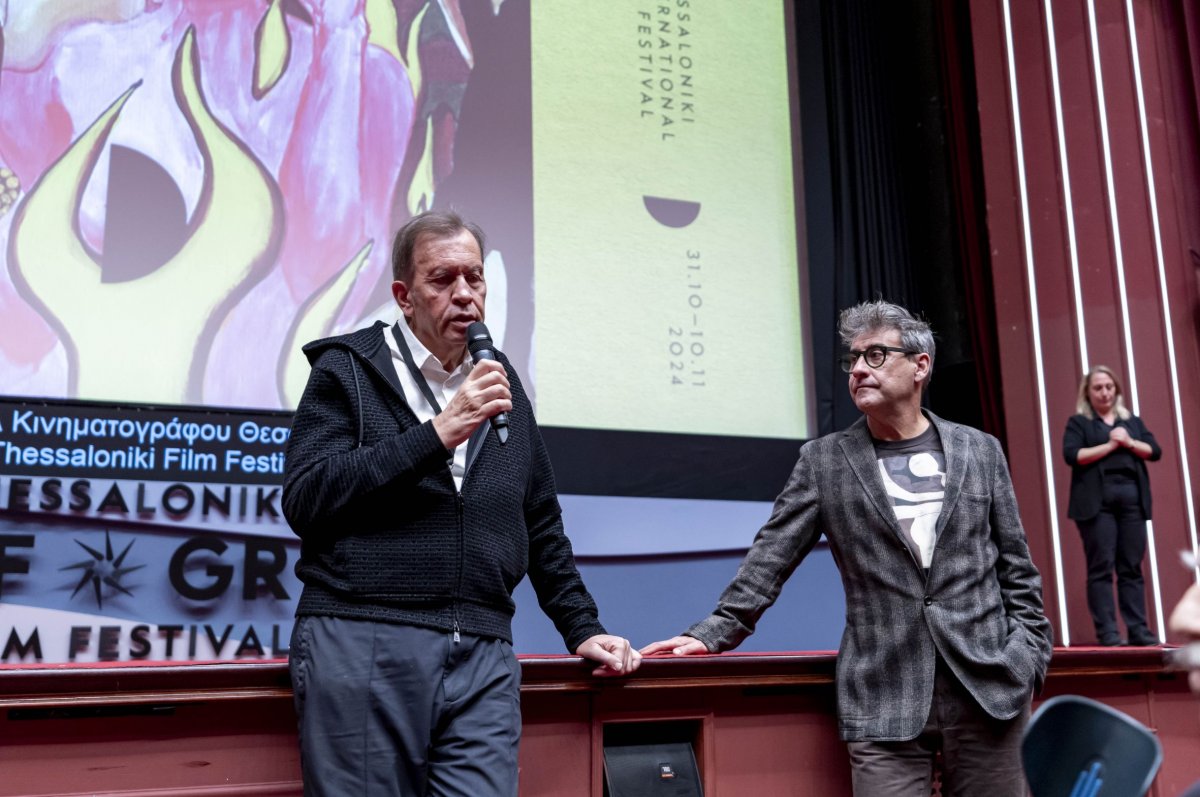Some of the issues discussed at the second Just Talking session, which took place on Wednesday, March 16, 2011 at the Excelsior Lounge of the Electra Palace Hotel, were the relationships between the directors and their subjects, various dilemmas and problems during filming, and the objectivity of the director as observer.
Participating were directors Odette Orr (Beating Time), Hans Dortmans (Divine Pig), Anna Tsiarta (In This Waiting), Phil Grabsky (The Boy Mir – Ten Years in Afghanistan), Vibeke Lokkeberg (Tears of Gaza) and Anneta Papathanasiou (The Nymphs of Hindu Kush).
Anna Tsiarta records the stories of seven Greek and Turkish Cypriots in her film In This Waiting. After thirty years, they were informed that their missing relatives’ remains were found. “Conditions had matured, and the exhumations helped these people speak. But what I had to do was win their trust, because there was wariness on their part, especially that of the Turkish Cypriots, about my approach to the issue”, the director noted. She didn’t observe them for years, but recorded their memories. “The film is mostly about the human side, it is a story of love and loss, and also justice and human rights”, she added.
Anneta Papathanasiou began making a film on women in the Kalash tribe, which lives on the Hindu Kush Mountains in the northwest of Pakistan, but developments changed her original goal. “These 4,000 Kalash believe in nymphs, that is, female deities, while they are surrounded by 165 million Pakistanis, who are Muslim. The tribe’s women enjoy greater freedom, so I decided to follow the life of the first Kalash woman who went to university. I went there because of Thanassis, a Greek volunteer who has, for the past 19 years, been living for six months in Greece and six months in Pakistan. He has helped the Kalash build their own schools and even recorded their language in a book, as it existed only orally”, the director explained. Filming went well, until the Taliban kidnapped Thanassis, with whom Ms Papathanasiou had developed a friendship. “When Thanassis was kidnapped, neither government, of Greece or Pakistan, wanted me to continue shooting. One third of the film was shot by a Pakistani cameraman and finally – though I had material on the kidnap victim that no one else had – I decided not to include it in the film. When he saw the film, before it was finished, he told me that I had actually included many elements of his story in the film, and I did have to cut scenes”, the director noted. “I usually don’t show a film to its characters beforehand, so they don’t tell me what to do. Since they’re not actors and it’s about their lives, they could feel that what the documentary shows is not how they really are, but is only my perception”, she added.
The Boy Mir – Ten Years in Afghanistan by Phil Grabsky is the continuation of another documentary he had made in 2002, recording the life of a boy from Afghanistan. Almost ten years later, the director returned to film him as an adult. “You get involved from the moment you start filming, you’re not an objective observer”, the director declared. Asked if he had to pay the family in order to make the film he answered: “I chose this family from 2,000 other refugee families, who were jealous of that fact. But I chose to reward not only Mir’s family but the whole community with gifts. I remember thinking that the money I gave them was not going to change their lives, since they would continue to live in poverty. I even asked myself if I as doing it for my film, but this wasn’t the reason. The people who advised me there told me that if I gave more money I would create problems for the family. However I still had a dilemma, because I thought that these people are trying to secure their daily food, while I sold my documentary to television. Finally, returning to Afghanistan, I preferred to give money for Mir’s education. Sometimes you fall into the trap of exaggeration, in order to sell your film, and you don’t think that you’re exaggerating with the lives of real people. When I showed the first film to the family they liked it, with the exception of the fact I showed their young daughter’s face. In the summer I will show them the second film, but I will make sure it won’t upset them”, he said.
A young, brave man is the leading character of Odette Orr’s Beating Time. In September 2005, the director read a newspaper story about 29-year-old Avi Kremer, who was diagnosed with ALS and when told he only had four years to live, decided to fight in order to find a cure. “Unfortunately, research wasn’t being done to discover a medicine, because the patients die very quickly. Avi, a graduate student at Harvard University, decided to start a campaign to find funding and investors who would want to support the search for a cure. The essence of the film is not the illness, but Avi’s personality as well as his personal battle against time. We wanted the film to have an optimistic ending, but unfortunately one of the participants died during shooting”, the director said. One of the problems she first faced was the fact that the three patients did not want the film to be made. “Later, when all three were in negotiations to find funding for research, they didn’t want the camera there because they were afraid. Also, when they even felt too weak to eat, they didn’t want this image of them to be recorded in the film. It took time to win their trust, and we respected their desire to turn the camera off sometimes”, Ms Orr said. Just before the film was finished, one of the characters’ wives wanted to see the material. “This lady appeared with her children, who complained that their father didn’t appear often enough in the film. Later I thought that I should have been stronger and not allowed them to see the material before the film was finished because they weren’t ready for it”, she noted.
Vibeke Lokkeberg’s film Tears of Gaza follows three children during the Israeli invasion of Gaza in 2008 and after the cease-fire. “During the invasion I couldn’t be in Gaza, so I had to find a crew in the region to do the shooting. I asked them to never stop shooting, even if a child is crying, because I felt this was the only way we could show the horror of war. People there don’t create bonds with westerners easily, because they feel they have been betrayed. The fact that the children were speaking with Palestinians and that the interviews were conducted by a woman finally helped them open up” the director said. She developed closer ties with one of the children, which she managed to transport to Norway with the help of a doctors’ mission which was in Gaza. Regarding problems making the film, one of these was choosing harsh scenes. As she said, two editors quit, saying that she should not show such horrible scenes on television because there is a limit set by either the medium itself or the families of the children who were members of Hamas. “I wanted to surpass that limit. This is the value of the film, that it didn’t respect what “should” be shown on the small screen. But my film was broadcast on state television, late at night, when one doesn’t watch a documentary on such a subject before going to sleep. I plan to protest the fact that they don’t respect the right of the viewers to be informed”, the director concluded.
Hans Dortmans' dilemma with his film Divine Pig was whether he should show the slaughter of his leading character, which is a pig. Finally, he not only showed the scene – despite the objections of the butcher and the pig’s owner – but even tasted the animal’s flesh. “The inspiration for my film was the love-hate relationship with pigs. I come from a farming family and I grew up on a farm with animals. Later, my father, as consultant of the Ministry of Agriculture promoted the industrialized raising of pigs and I became a vegetarian. Of course, while living in London I couldn’t resist bacon, I have to admit. Also, I thought that the pig is an animal on which we project other elements, through religion, and that even though it is considered a dirty animal its meat is consumed more than any other. This is more or less why I decided to make the film”, the director noted. In the film, the butcher develops a bond with the pig, and struggles with whether or not he should slaughter it, while various fellow villagers are on the animal’s side, seeing it as the village mascot. Some others can’t wait for the slaughter, because they believe that an animal that has lived well is more delicious. “It really was”, the director admitted. He had to comfort the butcher, telling him that this is simply the cycle of life.



